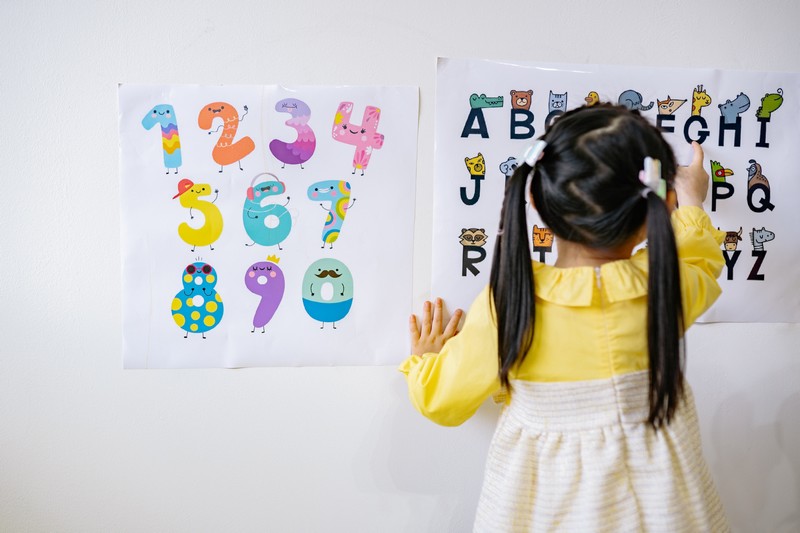
What is the best way to educate children to read?
Learning to read is a lengthy process that does not occur naturally. Making reading enjoyable for children is the best approach to educate them to read.
Most individuals don’t consider the process of learning to read until they decide to begin homeschooling their children.
Learning to read is not a ‘natural’ process that occurs on its own, contrary to popular belief. It’s a complicated one that necessitates the right teaching of phonics (understanding the relationship between letters and sounds) and phonemic awareness, among other skills and tactics.
The good news is that, while reading is a difficult process in and of itself, the methods required to develop these skills are rather easy and straightforward. Try these simple and time-tested ways to teach kids how to read and make it a happy and gratifying experience.
Here are ten easy ways to help your child learn to read at home:

- Develop Phonemic Awareness Through Songs and Nursery Rhymes.
Nursery rhymes and children’s songs aren’t simply for entertainment; the rhyme and rhythm help children hear the sounds and syllables in words, which aids in their learning to read. Clapping rhythmically together and reciting songs in unison is a good approach to improve phonemic awareness (one of the most crucial skills in learning to read). This fun and connecting exercise is a great way for youngsters to acquire implicit literacy abilities that will help them succeed in reading.



- At Home, Make Simple Word Cards
Cut out simple cards and write a three-syllable word on each one (e.g. ram, sat, pig, top, sun, pot, fin). Allow your youngster to pick a card, then read the word aloud while holding up three fingers. Request that they say the first sound in the word, then the second, and finally the third. This easy practice requires little preparation time and improves phonics and decoding skills (helping them learn how to sound out words). If your youngster is learning the letters of the alphabet for the first time, concentrate on the sound each letter makes rather than the letter names.
- Provide a Print-Rich Atmosphere for Your Child.
Create a print-rich environment at home to help your youngster improve his or her reading skills on a daily basis. Children can see and apply links between sounds and letter symbols when they see printed words (on posters, charts, books, labels, and so on). Point out letters on posters, billboards, and signs when you’re out and about. You can practice sounding out the letters to build words over time. Concentrate on the first letter of each word. “What sound does that letter make?” inquire your child. “Can you think of any other words that begin with that sound?” “Can you think of a term that rhymes with that?”

- Play Word Games in The Car or At Home.
Introduce easy word games on a regular basis, building on the preceding phase. Play games with your child that help him or her to listen, identify, and manipulate the sounds in words. Start by asking questions like “What is the first sound in the word?” or “What is the first sound in the word?”_ “What does the word’s final sound sound like?”_ “What words begin with the sound?” and “What words rhyme with?” are two examples.
- Recognize the Fundamental Skills Required to Teach Children to Read.
It’s crucial to remember that learning to read necessitates the development of a variety of skills. You can learn about the five most important aspects of reading in this article. These are the skills that all children require in order to learn to read proficiently. In summary, they are as follows:
The ability to hear and manipulate the various sounds in words is known as phonemic awareness.
Recognizing the relationship between letters and the sounds they create is known as phonics.
Understanding the meaning of words, their definitions, and their context is referred to as vocabulary.
Understanding the meaning of text in both storybooks and informative books is required for reading comprehension.
Fluency is the ability to read aloud quickly, clearly, and accurately.

- Use Letter Magnets as A Toy
For some youngsters, middle vowel sounds can be challenging, which is why this practice can be so beneficial. Prepare letter magnets for the refrigerator and separate the vowels from the consonants (a, e, i, o, u). Ask your youngster to spell a CVC word (consonant-vowel-consonant), such as “cat,” using the magnets. To assist them, speak each vowel sound aloud (/ayh/, /eh/, /ih/, /awe/, /uh/) while pointing to the letter that corresponds to it, and ask your child which one sounds similar to the middle sound.
- Make Use of Technology to Keep Your Child Interested.
To keep kids motivated to progress, learning to read should be a fun experience. A child may be enthusiastic and eager to learn at first, but once they meet a wall, they may become overwhelmed and give up easily. It can feel tough to pick up where you left off as a parent and know where to fill in any gaps that are generating frustration.
Reading Eggs uses self-paced courses that are tailored to each child’s level of aptitude. Children are awarded for completing exercises and progressing to new levels on a regular basis, which keeps them motivated to stay on course. Parents can also see real-time progress reports to see how their children are progressing.

- Read Together Every Day and Ask Each Other Questions About the Book.
Many people are unaware of the wide range of abilities that can be acquired simply by reading to a child. You’re not only teaching children how to sound out words; you’re also helping them improve their comprehension abilities, expand their vocabulary, and hear what a fluent reader sounds like. Most importantly, daily reading encourages your child to develop a love of reading, which is the most effective strategy to prepare them for success in school.
By asking questions while reading, you can help your child improve his or her comprehension skills. Encourage younger children to interact with the photos (e.g., “Do you see the boat?”). “Can you tell me what color the cat is?”). Ask older kids questions regarding what they’ve just read, such as, “Why do you think the little bird was afraid?” “When did Sophie first realize she have exceptional abilities?”

- Every Day, Play Activities to Help Youngsters Memorize High-Frequency Sight Words how To Teach Kids Sight Words
Sight words are those that cannot be easily pronounced and must be recognized visually. Sight words with a high frequency of occurrence in reading and writing are known as high-frequency sight words (e.g. you, I, we, am, had, and, to, the, have, they, where, was, does).
“See the word, pronounce the word” is a good method for learning sight words. For young children to become fluent readers, they must learn to recognize and read sight words. At the age of four, most children can learn a few sight words (such as is, it, my, me, no, see, and we) and roughly 20 sight words by the end of their first year.

- Be Patient; Making Reading Pleasurable Is the Best Method to Teach Kids to Read!
Every child learns at his or her own rate, therefore the most essential thing you can do is make learning fun for them. You can instill an early love of reading and offer your child the best opportunity at reading success in no time by reading consistently, mixing things up with the activities you choose, and letting them pick out their own books on occasion.








much thanks lates!